Last updated April 4, 2023
In light of the ongoing COVID-19 pandemic, there are more Americans who work from home now more than at any time in history.
More than half of the US workforce has been working remotely at their own homes in the past few months to cope with the lockdown restrictions and to avoid potential exposure to the virus.
Fortunately for the worried employees, many businesses are on board with the new reality of remote working and physical distancing and urge their workforce to continue working from home until things return to normal.
Interestingly, several tech companies, including Facebook and Twitter, even took it one step further, announcing employees will be allowed to work remotely on a permanent basis, provided they meet some criteria, which – among other things – takes into account the experience and job performance of the employees.
While working remotely indefinitely at the comfort of your couch might seem like an appealing option to have, SellCell’s new survey of remote workers reveals that reality is far less glamorous.
The survey, conducted between June 10-22, 2020, included more than 2000 US-based remote employees, aged 23 years or older, who have shifted their work locale from office to home at the onset of the pandemic.
SURVEY RESULTS
- For a majority (61.6%) of remote workers, social media platforms are a huge distraction while working at home.
- Other major disruptions affecting the work include Smartphones (53.7%), Binge-watching (42.1%), Kids (33.8%), Gaming (30.4%), News media (24.3%), Pets (18.1%), Online shopping (16%), and Partner (12.3%).
- More than five in 10 (53.5%) remote workers admit to scrolling through their social media feeds during work time, while a little over 44% reveal they multitask work alongside a Netflix show or while watching TV.
- Over four in 10 WFH employees (43.2%) admit to visiting adult sites on their work laptops — all while on the clock.
- Other popular WFH things that one wouldn’t dare to do in an office include Playing with kids/pets (38.2%), Exercising (35%), Gaming (33.5%), Housekeeping (31.5%), Snacking (27%), and Friends/family chitchats (20.2%).
- Two in 10 (19.8%) telecommuters confess to making love to their partners on the clock, while nearly 17% take time out of their busy work schedule to do some online shopping for groceries and other essentials.
- The worst things about working from home, based on the votes received, are Lack of social interactions (55.8%), No distinction between home and work life (43.5%), Poor eating habits (33.2%), Loss of self-discipline (25.6%), Absence of IT department (23.5%), Longer work hours (17.9%), and Frequent video calls (15.1%).
- Some of the perks of working at home, in the order of votes polled, are Flexible work schedule (61%), No more long commutes (52.5%), No need to dress up (44.8%), Money savings (35.7%), No more missed deliveries (28.4%), More family time (19.6%), and No annoying colleagues (10.1%).
- More than eight in 10 (83.2%) telecommuters admit to using their phone during work hours for catching up with friends and relatives and browsing the Internet.
- Personal use of phones during work time accounts for up to 1 hour for 21 percent, 1-2 hours for 37.9 percent, 2-3 hours for 30.5 percent, and more than 3 hours in the case of 10.7 percent of telecommuters.
- Seven in 10 respondents reveal they’ve not been able to stick to normal working hours while at home due to several factors, with Heavy phone usage polled to be the biggest culprit by 72.4 percent.
- Technical and security issues are to blame for irregular work hours according to 67.7 percent, followed by Household chores (49.4%), Getting up late/Sleeping in (46.2%), Looking after kids (34.4%), Less motivated (30.2%), Hungover (26.3%), Distractions from friends/family (23.7%), and Having a long lunch (16.1%).
- Working at home also has had adverse impacts on the daily routine of employees, including changes in sleep patterns (62.8%), dietary habits (70.3%), and exercise routine (75.4%).
- Since face-to-face meetings are pretty much non-existent, nearly five in 10 (48.3%) telecommuters feel no need for taking a shower in the morning, and a whopping two-thirds (66.4%) prefer staying in pajamas over suiting up for work.
- Alcohol consumption among WFH employees seems to be on the rise, as four in 10 (39.3%) admits to drinking more after work than they did before lockdown.
- Working remote has disrupted sleep patterns for many, with a little over half of the respondents reporting going to bed late, more than one third (36.6%) admitting to waking up later, 44.5 percent getting less sleep than normal, and almost three in 10 (28.9%) suffering from interrupted sleep. Sleeping patterns largely remain unchanged for 32.4 percent, however.
- Overeating seems to be an issue for roughly three in 10 (28.2%) telecommuters, while for an impressive 43 percent, eating healthy has been among the top priorities. Inconsistent meal schedule and skipping important meals of the day have pretty much become a norm for about 35 percent and 24 percent respectively while things haven’t changed much in the last few months for 24 percent as far as eating habits are concerned.
- Exercise routines have changed for nearly 77 percent; roughly 35 percent believe they tend to work out more than usual, whereas 42 percent think they don’t get as much exercise as they used to.
- More than half (55%) think workload has increased after the workplace has shifted to home, as opposed to 30 percent who think otherwise. Workload remains unchanged for the most part, according to 15 percent.
- More than half say their stress levels have gone up since working from home. Per the survey, a massive 51.4 percent feel more stressed, a mere 21.5 percent are less stressed, and 27 percent respond there was no change.
- Overall productivity has gone up, with nearly 45% revealing they are more productive than ever. 34.5 percent, on the other hand, feel less productive, while 20.6 percent believe there has been no change.
- A majority would like to experience the best of both worlds going forward, as more than 45 percent prefer splitting the work week between home and office. However, only about 23 percent would like to continue working from home permanently after the pandemic is over in contrast to 32 percent who can’t wait to return to their office when things go back to normal.

SURVEY CHARTS & DATA
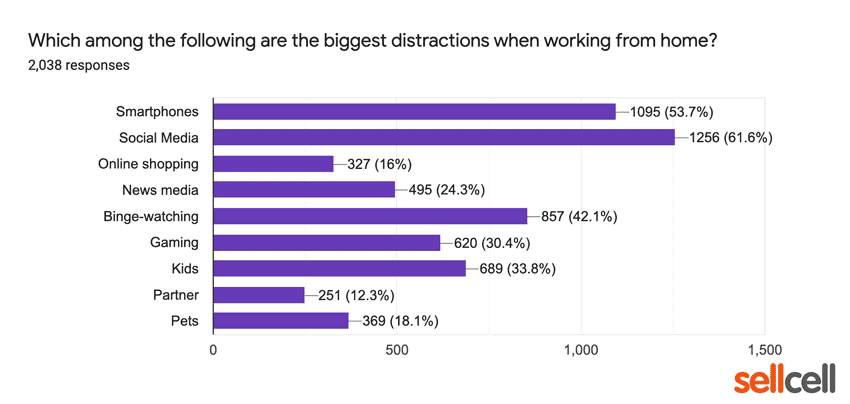
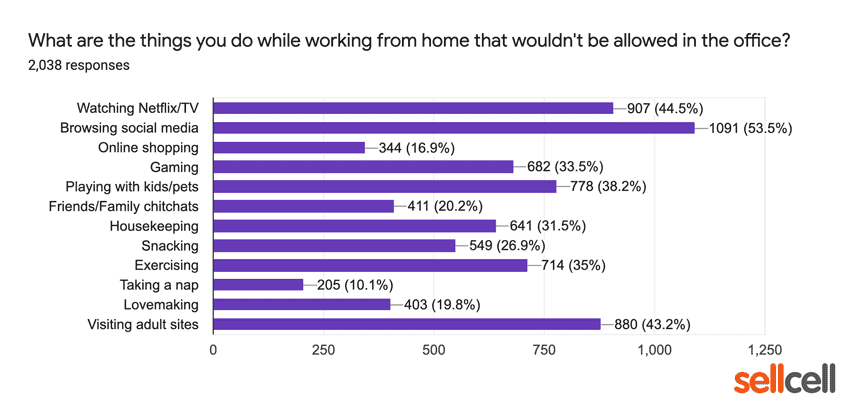
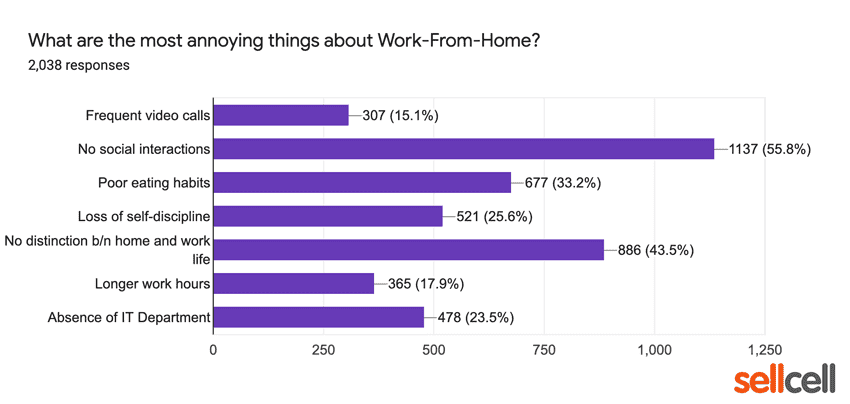
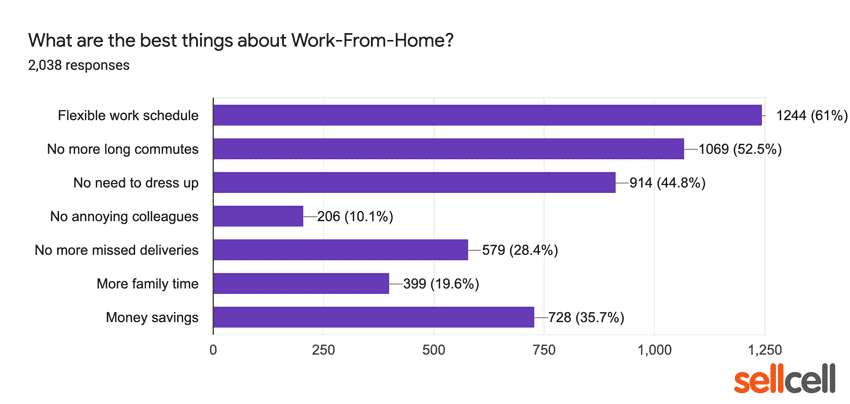
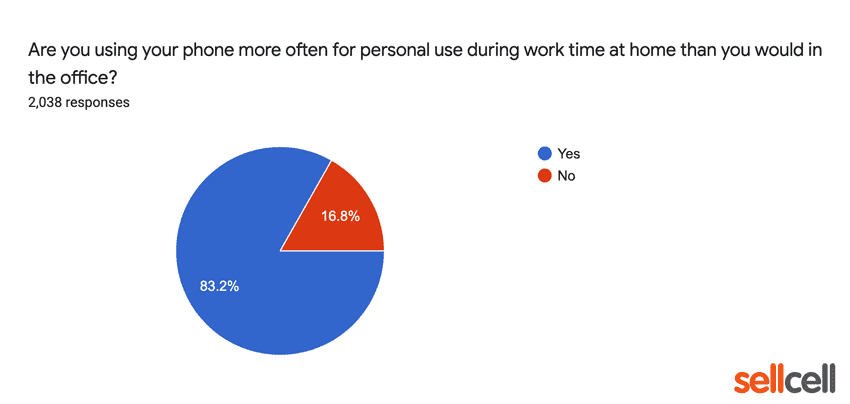
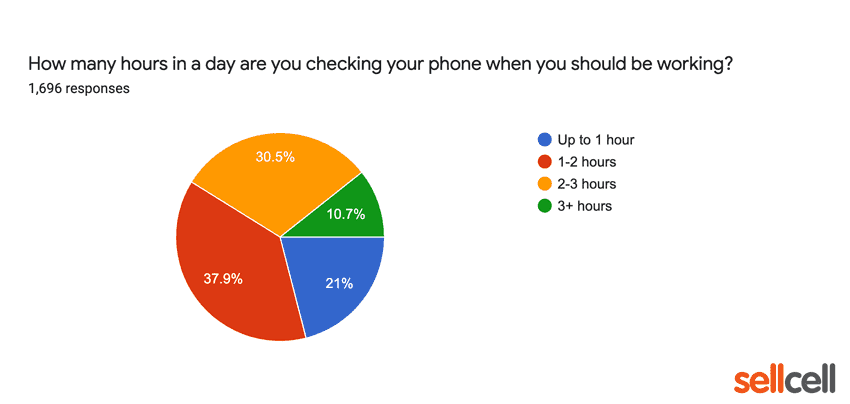
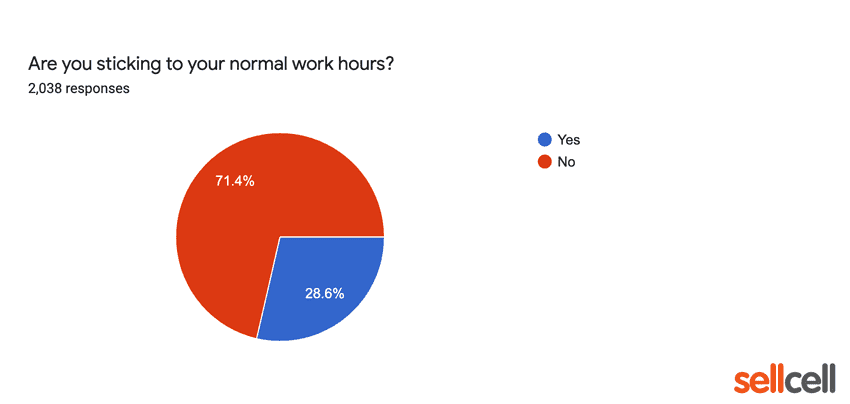
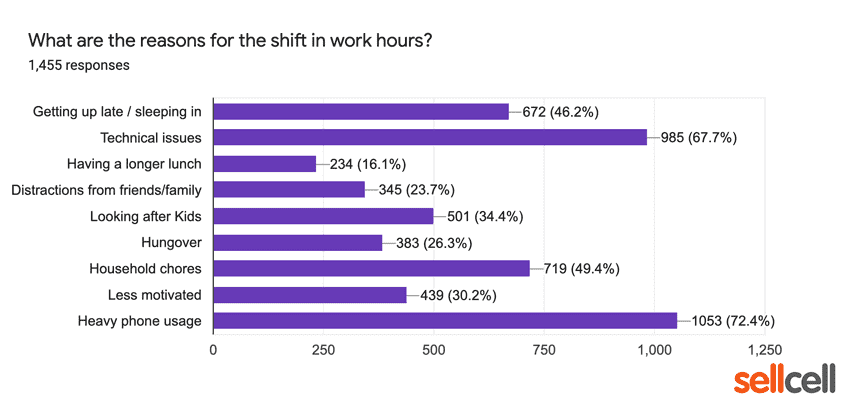
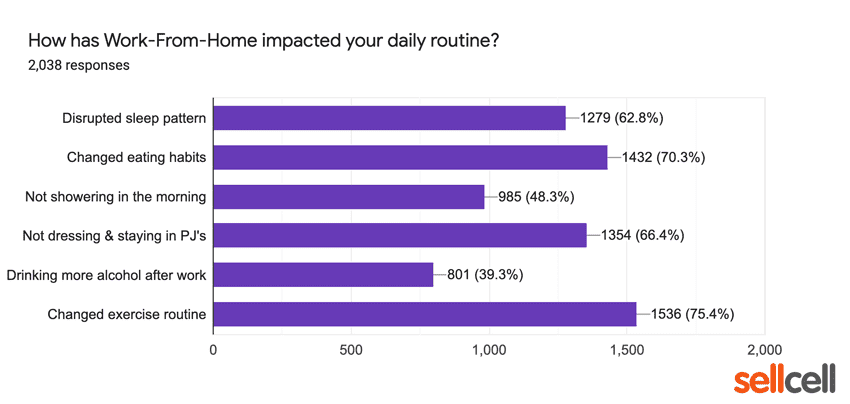
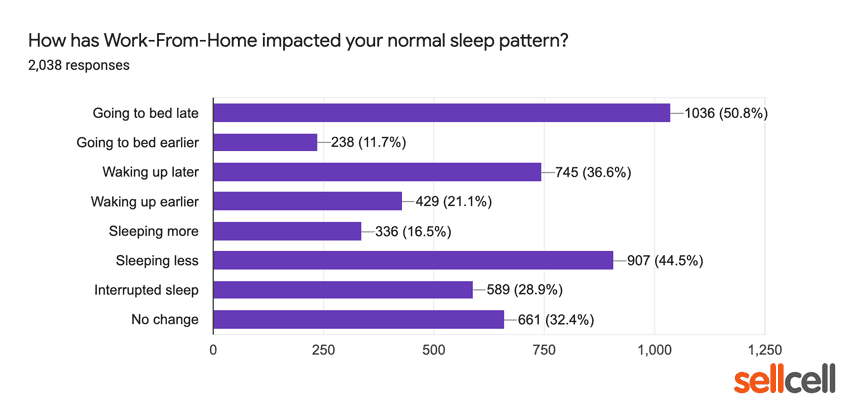
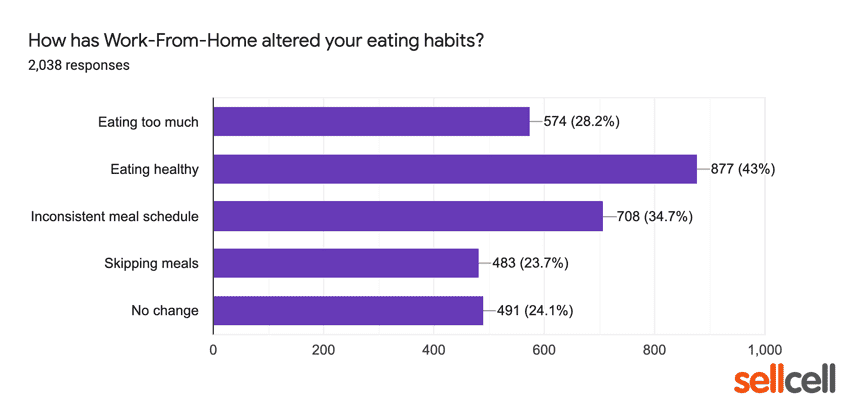
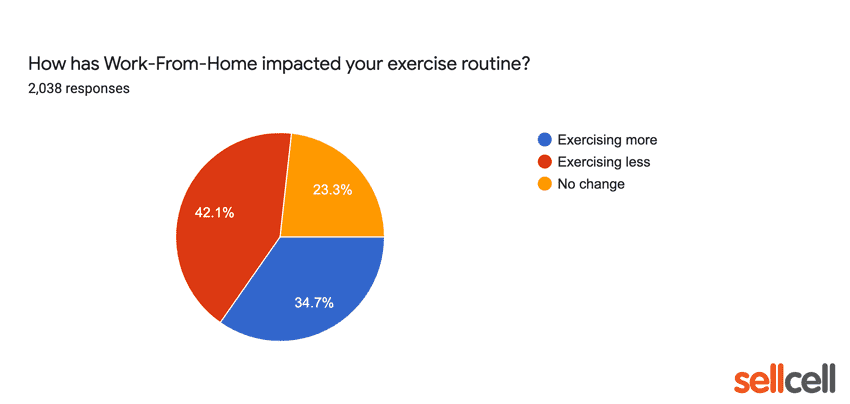
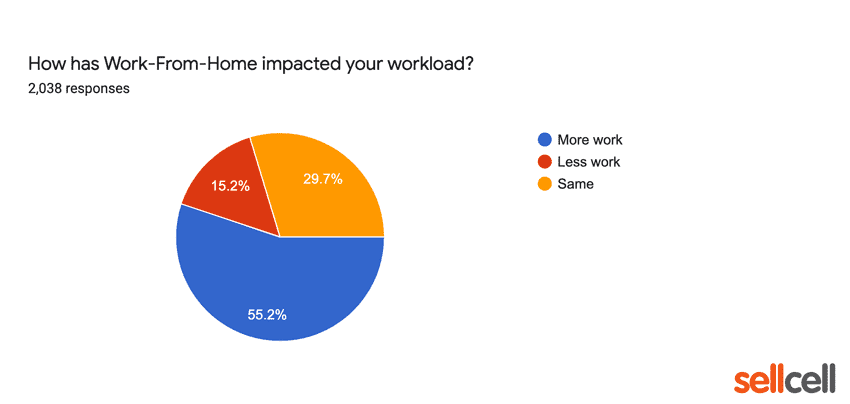
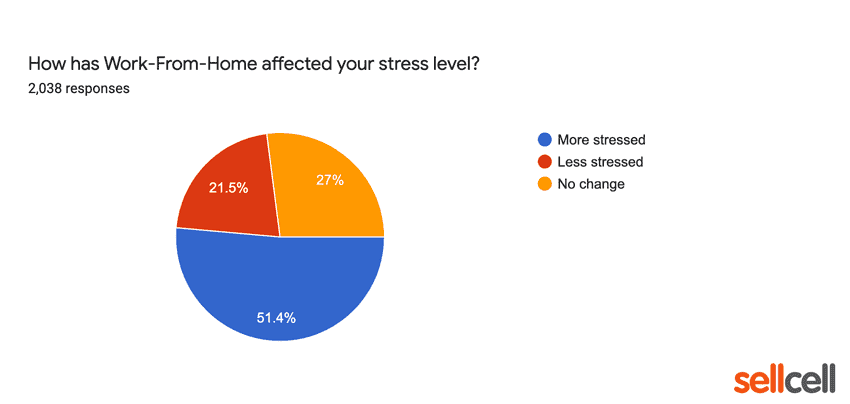
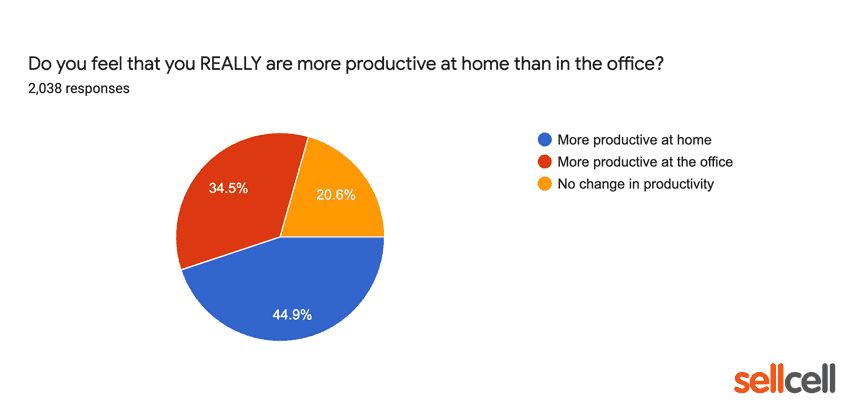
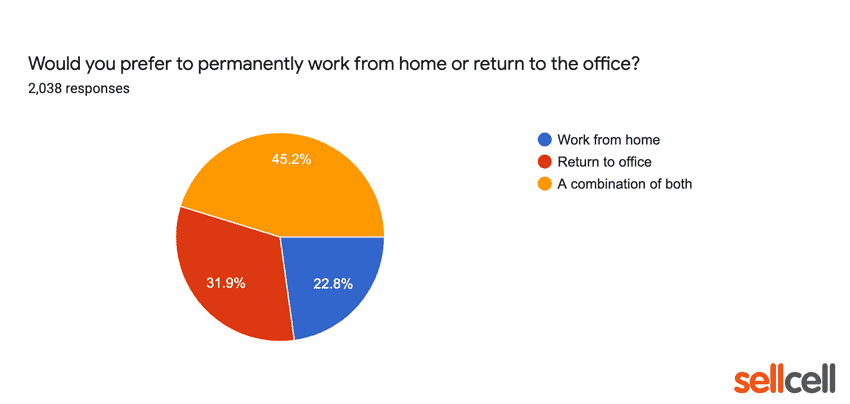
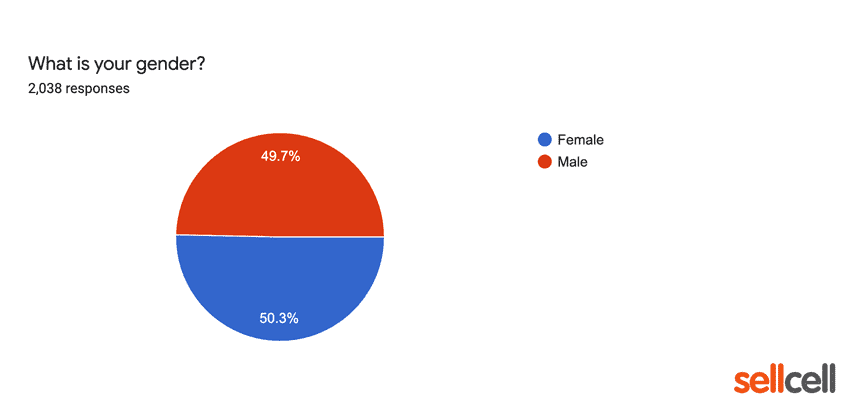
SURVEY METHODOLOGY
The report is based on a survey – conducted between June 10-22, 2020 – involving more than 2000 telecommuters, aged 23 years or older, based in the United States.
The exact percentages for respondents’ genders are 49.7% (1012) men & 50.3% (1026) women b/n the ages of 23 and 60. Respondents were Americans.
This is an independent survey conducted by SellCell in partnership with a third party marketing agency. Respondents took part in an online email survey
The motive of the survey was to examine the lifestyle changes newly remote workers had to make to embrace the new reality of closed office spaces and virtual work environment, and to understand the struggles and advantages of working from one’s own home.
The responses to the survey were collected without storing any personally identifiable information of the involved respondents.
